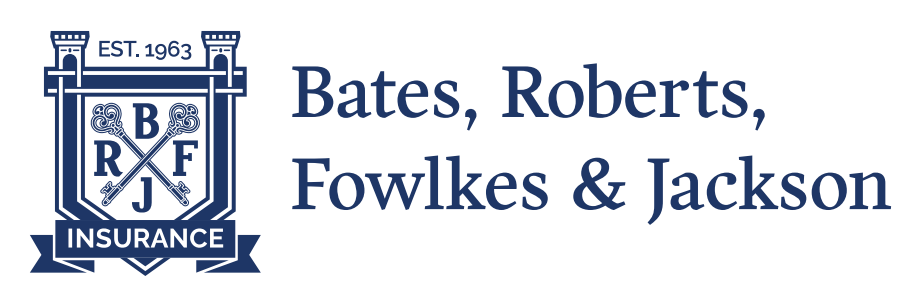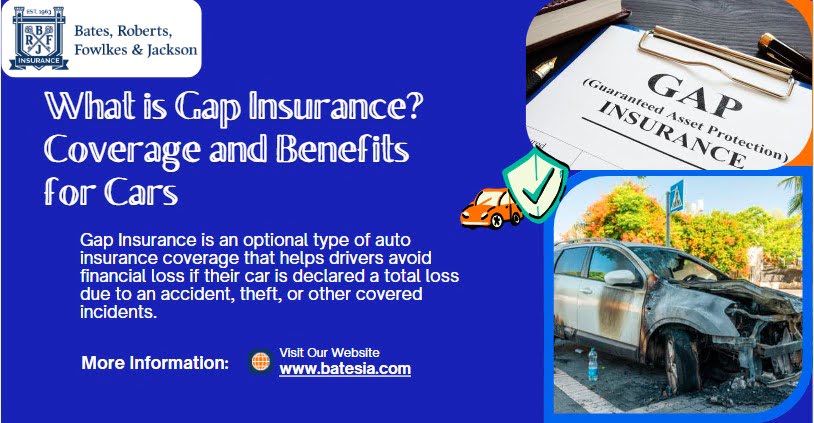What is Gap Insurance? Its Coverage and Benefits for Your Cars
Purchasing a new or used vehicle is a significant financial commitment, and protecting that investment is a priority for most car owners. While many people are familiar with standard auto insurance policies, few know the importance of gap insurance. If your vehicle is totaled or stolen, gap insurance covers the difference between what you owe on your car loan and the car’s actual market value.
What is Gap Insurance?
Gap insurance, short for Guaranteed Asset Protection, is an optional type of auto insurance coverage that helps drivers avoid financial loss. If their car is declared a total loss due to an accident, theft, or other covered incidents. While standard auto insurance covers your car’s current value (often referred to as the actual cash value or ACV), this value can depreciate quickly after purchase.
If your vehicle is totaled, the payout from your regular insurance might not cover the amount you still owe on your auto loan or lease. That’s where gap insurance comes in—it covers the “gap” between the car’s ACV and the outstanding loan balance.
For example, let’s say you bought a car for $30,000, and a year later, it’s worth only $25,000. If the vehicle is totaled in an accident and you still owe $28,000 on your loan, your auto insurance provider would typically pay out the car’s ACV of $25,000. Without this insurance, you’d be responsible for paying the remaining $3,000 out of pocket.
How Does Gap Insurance Work?
To better understand how gap insurance functions, let’s look at a step-by-step breakdown of how it works in real-life scenarios:
- You Purchase a Vehicle: After buying or leasing a vehicle, you may be offered this insurance as an add-on by your dealership or insurance provider.
- You Make Monthly Payments: Over time, you make monthly payments on your car loan, reducing the amount you owe. However, the car’s value depreciates faster than your loan balance reduces, creating a potential gap.
- An Accident Occurs: If your car is stolen or involved in an accident that results in a total loss, you file a claim with your auto insurance provider. They assess the situation and determine the car’s ACV at the time of the loss.
- Insurance Payout: Your auto insurance policy pays out the current value of your car minus any deductible. However, if there’s a gap between what you owe on your loan and the car’s value, you’re responsible for that difference.
- Gap Insurance Coverage: If you have gap insurance, it covers the difference between the insurance payout and the outstanding loan balance. Ensuring you’re not left with a hefty bill for a car you no longer own.
Who Needs Gap Insurance?
While gap insurance isn’t necessary for every driver, confident individuals and situations make it highly recommended. Here’s who should consider purchasing such type of insurance:
1. New Car Owners
New vehicles tend to lose value quickly, with some estimates suggesting they depreciate by as much as 20% within the first year. If you’ve recently purchased a new car and financed most or all of the purchase price. You may owe more on your loan than the car is worth, particularly during the first few years. In such cases, this insurance can provide crucial financial protection.
2. Lease Holders
When leasing a car, the leasing company often requires gap insurance. Leases are typically based on the vehicle’s total value, and monthly payments are calculated to cover the depreciation during the lease term. If the car is totaled, you could still owe money on the lease that exceeds the car’s value. Gap insurance will cover this difference.
3. High Loan-to-Value Borrowers
If you financed a large percentage of your car’s purchase price, particularly with a small or no down payment, you are at greater risk of being “upside down” on your loan (owing more than the car is worth). Gap insurance is essential for such borrowers. As it protects them from financial strain in the event of a total loss.
4. High Mileage Drivers
Vehicles with high mileage tend to depreciate faster than average, which can create a more significant gap between the loan balance and the car’s actual value. If you drive more miles than the typical car owner. You should consider gap insurance to protect against this accelerated depreciation.
5. Commercial Vehicle Owners
Business owners who use vehicles for company operations may want to add gap insurance to their commercial property insurance policy. Commercial vehicles are often vital to business operations, and the financial burden of a total loss could significantly impact a business. Gap insurance can help cover the outstanding loan or lease amount if the vehicle is totaled or stolen. Offers peace of mind for business owners.
Benefits of Gap Insurance
Gap insurance provides several important advantages for car owners, helping them avoid significant financial losses in the event of a total loss. Here are the key benefits of having gap insurance:
1. Protection Against Depreciation
Vehicles depreciate rapidly, and in many cases, the loan balance exceeds the car’s actual value within the first few years. Gap insurance offers protection against this depreciation by covering the difference between the insurance payout and the loan balance.
2. Peace of Mind in Uncertain Situations
Accidents and vehicle thefts are unpredictable, and the financial repercussions can be substantial. With gap insurance, you can drive confidently, knowing that even if your vehicle is totaled or stolen, you won’t be left with a large debt for a car you no longer own.
3. Financial Protection for Leased Cars
For those leasing a car, gap insurance is a must-have. Since leases are calculated based on the vehicle’s full value, a total loss can leave you owing more than the car’s worth. Lease insurance eliminates the risk of owing money on a vehicle that’s no longer usable.
4. Covers High Loan-to-Value Ratios
Suppose you financed your vehicle with a small down payment or rolled negative equity from a previous car into the new loan. In that case, gap insurance protects you from the financial burden of being upside down on your loan. You must pay the difference out of pocket without gap insurance if the car is totaled.
5. You Don’t Pay for a Car You Not Have
The primary benefit of gap insurance is that it prevents you from having to pay off the remainder of a car loan for a vehicle you no longer possess. This can save you from financial hardship in the event of a total loss.
What Gap Insurance Does Not Cover
While gap insurance provides essential coverage, it’s important to understand what it doesn’t cover. Here are a few critical exclusions:
- Deductibles: Gap insurance usually doesn’t cover your auto insurance deductible, which you must pay out of pocket before your insurance coverage kicks in. You’ll still be responsible for paying this amount.
- Mechanical Issues or Repairs: Gap insurance doesn’t cover repair costs for mechanical issues or regular wear and tear. It only applies in situations where the vehicle is declared a total loss.
- Negative Equity from Trade-Ins: If you’re rolling negative equity from a previous vehicle into a new car loan, insurance won’t cover this portion of your loan. You’ll still be responsible for paying it off.
- Add-Ons or Custom Features: Gap insurance won’t cover the cost of optional accessories, upgrades, or customizations made to your vehicle. Only the vehicle’s actual cash value is considered.
How to Purchase Gap Insurance
There are several ways to obtain gap insurance. Here are the most common options:
1. Through Your Auto Insurance Provider
Many auto insurance companies offer gap insurance as an optional add-on to your existing auto policy. This is often the most cost-effective method, allowing you to bundle gap insurance with regular coverage. Contact your insurer to check if they provide this insurance and inquire about the pricing.
2. From the Dealership
When purchasing or leasing a car, the dealership will likely offer gap insurance as part of the financing or leasing process. This option is convenient but is typically more expensive than buying gap insurance through your auto insurance provider. Be sure to compare prices before opting for dealership-provided such type of insurance.
3. Third-Party Providers
Some companies specialize in gap insurance policies. This may be a good option if you prefer to separate your gap insurance from your regular auto insurance. Be sure to thoroughly review the policy terms and conditions to ensure you’re getting adequate coverage.
Related: Does My Personal Auto Insurance Cover Business Use?
Gap Insurance for Business Owners
If your business relies on vehicles for operations, including commercial insurance in your commercial property insurance plan can be a wise decision. Whether leased or financed, company-owned vehicles are essential assets, and a total loss can have significant financial implications. Gap insurance ensures that your business won’t be left with a large loan or lease balance to pay after a vehicle is stolen or totaled.
By integrating gap insurance into your company’s property protection insurance plan, you can safeguard your business from financial strain in the event of an accident or theft. This type of coverage is essential for companies with fleets or high-value vehicles.
Conclusion
Gap insurance is an invaluable coverage that protects car owners and businesses from financial loss when their vehicle is totaled or stolen. It’s especially beneficial for new car buyers, leaseholders, and those with high loan-to-value ratios. By covering the gap between the insurance payout and the outstanding loan balance, this insurance provides peace of mind and ensures that you’re not left paying for a car you no longer have.
Whether purchasing gap insurance for personal use or as part of your business’s commercial property insurance plan. You should consider to contact a reputable insurance provider like Bates Insurance Agency for guidance. By understanding the benefits and limitations of gap insurance, you can make an informed decision that protects your investment and financial future.


